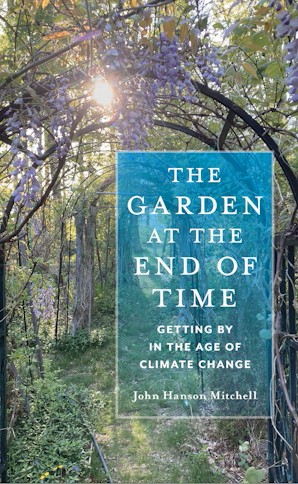 Whenever overwhelmed by news of a new climate-related disaster, John Hanson Mitchell buys a new rose bush. He explains it as a philosophical statement of resistance.
Whenever overwhelmed by news of a new climate-related disaster, John Hanson Mitchell buys a new rose bush. He explains it as a philosophical statement of resistance.
The Garden at the End of Time combines descriptions of climate-related problems with an account of his own gardening response. Each chapter is named for his latest rose purchase. Near the end of the book, in “Reine Marie Rose,” he never names the rose in the chapter; he just assumes you know that is what he bought.
Mitchell builds his theme around the last chapter in Voltaire’s Candide. There, after surviving multiple disasters, such as the huge 1755 earthquake in Lisbon (real), Candide (fictional) retreats to cultivate his garden. Mitchell reports his own conversations with a real ecologist he calls “Pangloss Rosen,” named for the Pangloss who accompanied Candide and tried to convince him that this is “the best of all possible worlds.”
The book includes a history of gardens, a history of sanctuaries, and many accounts of contemporary climate problems. One positive example is rewilding, a project to return farmland, the Knepp Estate in England, to its status before it was farmed. A history of English agriculture, beginning in the Stone Age, follows.
For all its weighty messages, The Garden at the End of Time presents its material lightly. To gardeners it brings more reasons to keep on cultivating.
Reviewed by Priscilla Grundy
Excerpted from The Leaflet for Scholars, Volume 12, Issue 10, October 2025